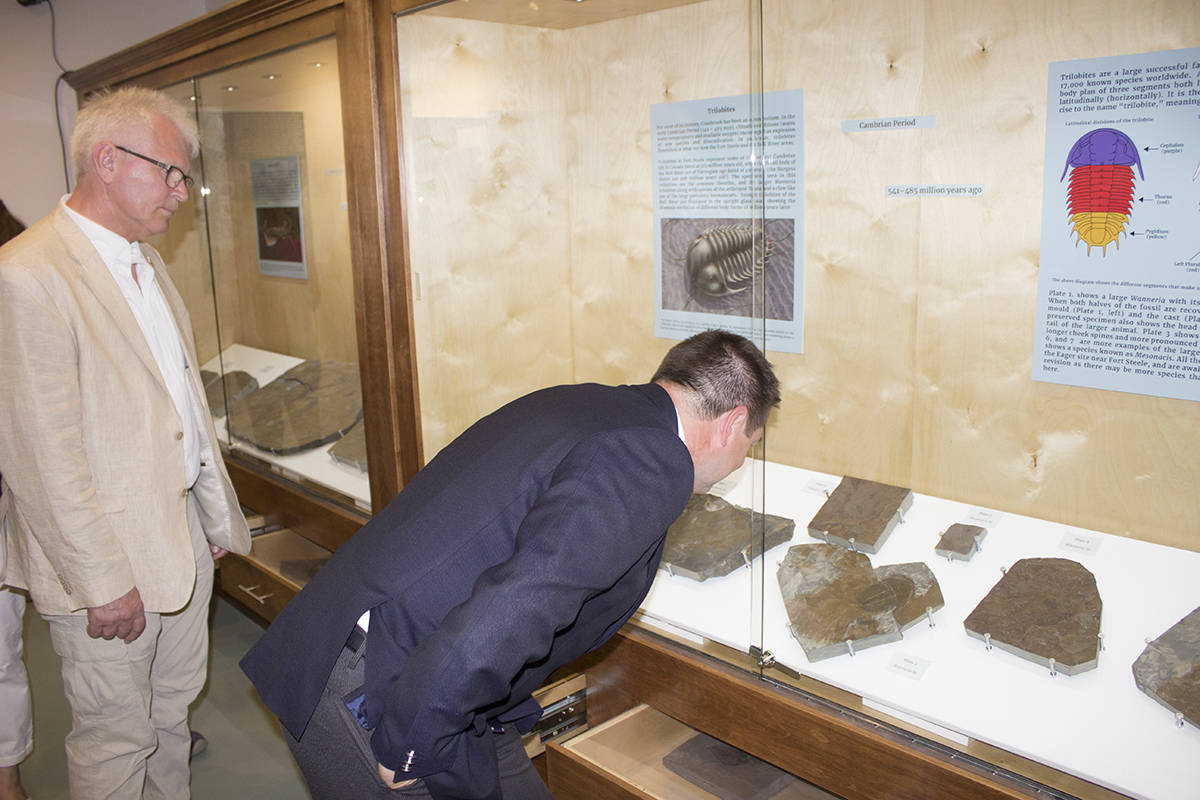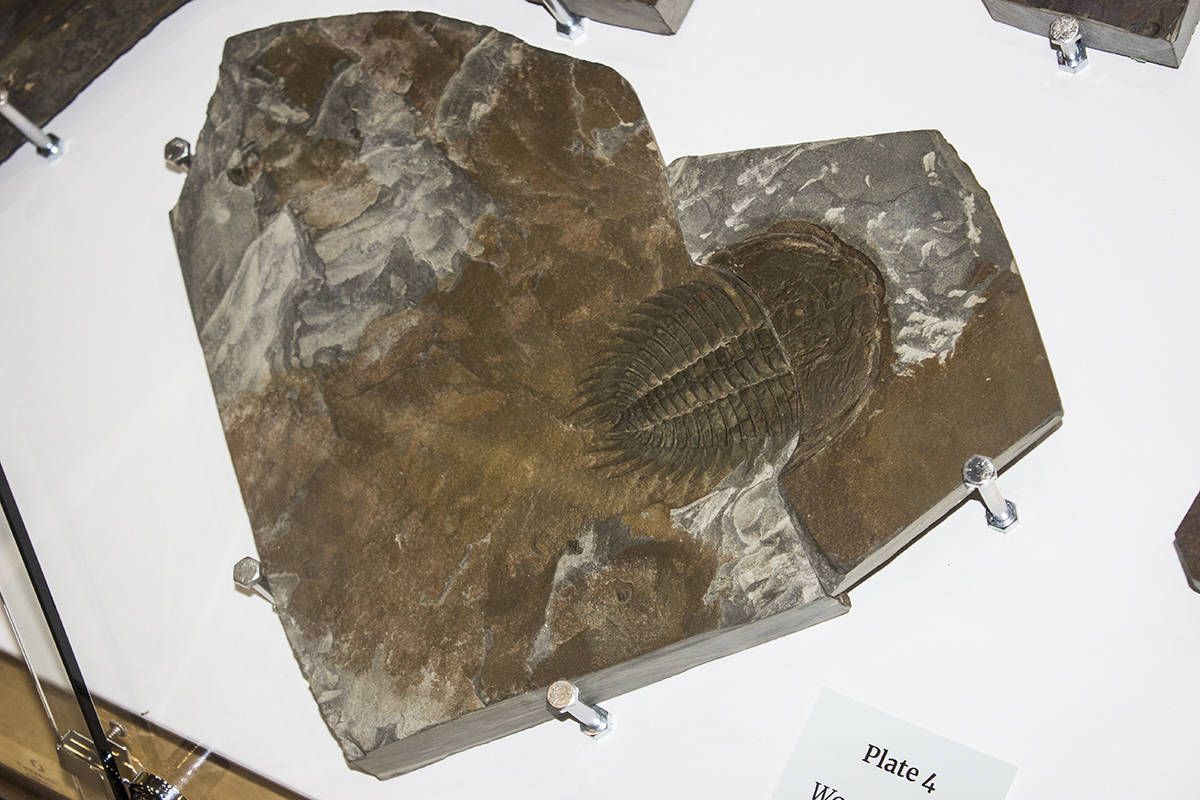The Cranbrook History Centre cut the ribbon to unveil their brand new paleontology exhibit to the public on Monday, June 25.
WATCH:
Many of the fossils now on display come from the personal collection of local amateur paleontologist Michel Plourde. Guy Santucci, Vice Chair of the Cranbrook History Centre Board of directors said that the collection of trilobites, fish, plants and prehistoric bird and dinosaur prints are world class. He also acknowledged the work of fellow amateur paleontologists Chris Jenkins and Chris New, who have done a great deal of work around the area to discover some of these items.
READ MORE: The future is fossils
Santucci said that he tried to get a fossil museum in Cranbrook going around 35 years ago, but it fell upon deaf ears, but he has always kept it in the back of his mind.
“Finally about two years ago we got together a group of us amateurs and hobbyists and so on and we had a director at the museum that was interested in doing this and so we managed to get Michel Plourde’s collection and that was the basis of starting the museum,” Santucci explained. “So my vision eventually came to fruition but a long time coming.”
What makes this collection, and indeed the surrounding area interesting is that we have one of the earliest occurrences of articulated animals that lived in Canada.
“We have a trilobite bed at Fort Steele that’s 513 million years old and it’s older then the Burgess Shale [fossils] by about eight million years,” Santucci said. “We also have the oldest bird tracks in the world in the Elk Valley. They date back to about 145 million years ago.”
The Bull River also contains one of the most prolific trilobite fossil beds in the entire world — “world class” diversity and quality according to Santucci.
“In China where there’s other fossils similar, they have only found about 30 to 40 species, well we can boast 60 different species of trilobites just with in a 50 mile radius of Cranbrook, which makes us world class.”
Santucci says that the goal now is to expand the exhibit even further. They already have a number of rocks that have been donated to them that they can’t display due to space limitations, but they do have extra space in the upper floor of the freight shed available to them that will eventually be used to house more specimens.
“Also it’ll open up other areas of exploration because we’re not just interested in the trilobites and the dinosaur tracks and the fish, there’s all kinds of Devonian animals and from all ages that we could put out,” Santucci said. “And when I say from all ages, remember that Cranbrook has been under water for most of its history and it wasn’t until about 60 million years ago that dinosaurs actually walked this area.”
He added that woolly mammoths used to roam this area as well, and people have found remnants of mammoth teeth down in the Flathead Valley.
“So we can go right from the birth of the earth to modern times with the natural history here. So we want to expand that to include all those different eras and we also want to expand that to make the exhibit last so. That’s our goal.”
Santucci said that he is ecstatic to finally see this project become a reality. “It’s been a serious hobby to me, I travel to different parts of the world and collect rocks and when I have all this treasure in my backyard and I can finally see it displayed it makes me quite happy.”
The new paleontology room was dedicated to Ted Fiedler, who was instrumental in the founding of the museum and put in countless hours as a volunteer and member of the board. His focus was more on trains, said Santucci, but they dedicated the room to him because he was one of the founding fathers and he dedicated so much time and energy to the Cranbrook History Centre.

